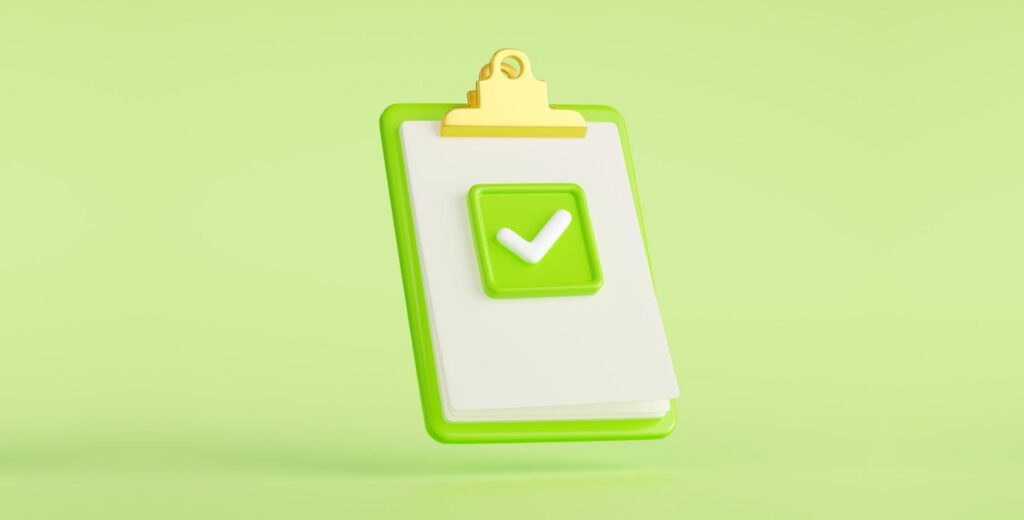Business
How to Stay Organized and Productive in Your Business with Effective Action Items
In the business world, it’s common to hear countless jargon, like “let’s get the ball rolling” or “lots of moving parts,” which can make life confusing.
Another lingo often used in the business world is action items. Sure, they don’t sound too revolutionary or complex, but they’re actually key in getting more things done than traditional to-do lists.
In a nutshell, action items indicate something that needs to be done. Since action items involve phrasing tasks in terms of their required action and not the desired results, using them can boost productivity and help you reach your business’s goals faster.
What Are Action Items and What Are the Benefits of Using Them?
An action item is different from a task. A task usually appears on a to-do list as a simple bullet point and doesn’t provide substantial information besides the what.
On the other hand, an action item is a more comprehensive yet concise task with a description that outlines the objective in terms of what, who, when, and how. Thus, anyone who sees action items even for the first time becomes familiar with what needs to be accomplished.
When implemented at work, action items also make it easier to determine the best employee for a specific task. This helps managers delegate tasks more effectively without slowing down or explaining things twice as action items speak for themselves.

How to Create Effective Action Items
Creating effective action items isn’t rocket science; on the contrary, the process is actually easy. We’ve listed some easy-to-follow tips to help you create action items that are sure to boost your focus and help you realize more goals.
Begin With an Actionable Verb
Starting your action items with a verb encourages employees to act immediately and follow through with the assigned task. Take the time to review each to-do list item you have right now and turn each into a more detailed action item.
For example, change “marketing plan” into “draft marketing plan for teams to review and approve.” Making these simple changes creates an actionable task that’s easy to understand and complete. You can also list each project and simplify the necessary tasks to complete. After, turn those tasks into action items to ensure the project’s completion.
Add Deadlines to Each Item
After drafting your action items, identify individual due dates for each. Creating a timeline that shows when to submit each deliverable might also help.
Listing the deadlines for each task tells employees how much time they have to finish each item, so they can determine which to prioritize. This prevents stress and helps them become more productive at work.
Describe Each Item in Detail
When listing action items for employees, ensure to describe each in detail. This makes it easier for everyone concerned to set clear expectations and encourage employees to complete assigned tasks efficiently and correctly. Summarizing an entire action item takes one to two sentences.
If necessary, add a longer description of the task and how it affects the project’s success. This way, employees have a better and clearer understanding of the item and will become more motivated to complete them.
You can also attach documents or other materials to your description, so employees will have a reference when working on the task. This guarantees a high-quality output and an output that matches your expectations.
Designate Task Owners
Review the content and requirements of each action item to determine the best employees capable of completing them. Assess each employee’s skill set and experience and use that knowledge to assign items to individuals whose abilities align with the requirements of those action items.
Unsure of which items to assign to which employee? Conduct a meeting beforehand and list all the tasks you expect your team to complete. Have each member volunteer for the items they believe they can handle. You can also contact department heads or leaders to assign action items to the right team members.
Determine the Priority Level of Each Item
Label action items with their respective priority level. This helps employees understand when to complete items assigned to them and what to prioritize in combination with other tasks.
If you’re assigning several items to one employee, assigning each item with a priority level tells them which to work on first. This also helps employees manage their pending tasks and ensure they can submit all on or before the deadlines.
Push Action Items Into the System Where You Manage Your Work
Nowadays, businesses are driven by technology, as plenty of collaborative management systems are suitable for various businesses and teams.
It’s important that action items are pushed into the system you and your team use. This approach guarantees better results, especially if the push becomes part of everybody’s workflow associated with running a meeting.
Don’t let your meeting about your action items get forgotten. If items are crucial to a specific system or software, do it immediately. Assign someone to input these action items to your team’s chosen platform if necessary.
Input the deadlines of each action item into a project management program or app to make tasks visible to all the employees concerned. Aside from letting employees know how much time they have to complete certain tasks, using a project management program also helps everyone understand how their roles contribute to the project’s overall success.
Include a Status
Projects often run for weeks or months, so it’s vital to include statuses in your action list to determine where your team is at. Instruct teams to update action items assigned to them by setting the status to Scheduled, In Progress, Delivered, or Completed.
By updating the status of each action item, you won’t have any problems tracking, managing, and reporting your team’s progress. Plus, it helps you identify which team member is behind or ahead of the deadline and offer help whenever necessary.
Work With a Consistent Format
Action items must follow a consistent format all the time. For instance, if you’ve created an action list that includes a task owner, priority level, due date, and task description today, ensure that all the action lists you’ll soon make have the exact (nothing more, nothing less) details.
Consistency leads to better understanding and helps you become more efficient in preparing action items. Over time, this will also help team leaders or managers develop effective action lists independently.
Conduct Daily or Weekly Reviews
To ensure that the action items serve their goal of faster processing of tasks, conduct daily or weekly reviews. How often you conduct these reviews depends on the length and complexity of the project and the number of individuals involved.
Conducting regular reviews will help you and your team perfect the action list by incorporating feedback from team members, collaborators, and others. It also allows teams to identify problems early and seek solutions to prevent them from worsening.

Examples of Effective Action Items
Still struggling to create effective action items for you and your team? We’ve listed examples below to help you create action items from scratch.
Action items for a marketing team
Action item 1: Create Facebook ads for an upcoming 3-day sale
Task owner: Nicole Rodriguez
Priority level: High
Due date: 05/15/2023
Task description: Create a social media banner, including a short description of the details of the upcoming promo. Include links to the site and images of previous promos.
Action item 2: Write product description for new pet stroller
Task owner: Bethany Smith
Priority level: Medium
Due date: 05/23/2023
Task description: Rewrite the product description to better highlight the features and inclusions of the new pet stroller. Include product and shipping prices, warranties, and the company’s return policy.
Action items for the human resources team
Action item 1: Hire 15 new agents for a new client
Task owner: Sara Miller
Priority level: Medium
Due date: 05/10/2023
Task description: Hire experienced agents with a background in customer service. New hires should be endorsed to the production floor before the due date so that they can take calls on the 10th.
Action item 2: Create an employee reward system
Task owners: Olivia Hernandez and Henry Adams
Priority level: Medium
Due date: 05/10/2023
Task description: Create program guidelines, including who is qualified (trainees, probationary, or regular employees), how often you give rewards, and how much the program will cost.
Maximize Action Items for a More Organized and Productive Business
Effective action items allow business owners to organize priorities for each employee and check everyone’s progress. Most importantly, action items also encourage productivity and accountability at work, two traits that will significantly benefit all businesses in the long run.
Following all of the tips mentioned here to create effective action items doesn’t take too much time at all. But making the switch — from using traditional to-do lists to embracing action items — will definitely improve your business’s process and ensure that employees do more!











